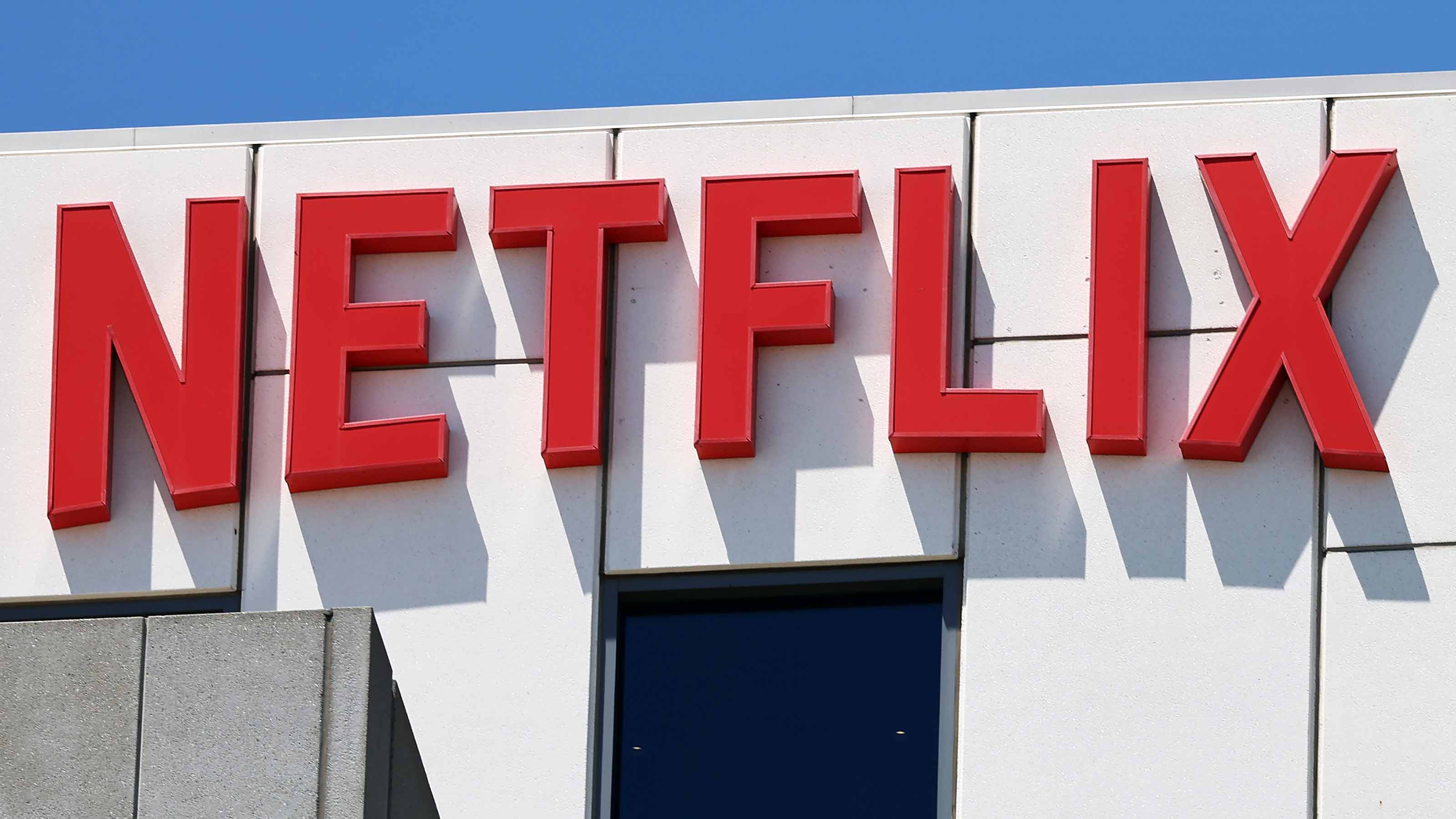Drowning in Streaming Fees
With so many options to stream TV, movies and other programs, you could pay as much as you did for cable. Use our tips to save money and find the best services for you.

Not so long ago, parting ways with your cable or satellite television provider left you with just a handful of viewing options. Early cord-cutters could sign up for Amazon, Hulu or Netflix to stream movies and previously aired TV shows, but they usually missed out on live programming. Sports fans could use an antenna to catch some games on broadcast networks, but they often had trouble cheering on the home team because of rules banning coverage of games in a team’s local market. And people who waited for their favorite shows to appear on the network’s website a few days after they aired did their best to avoid spoilers until they could watch the latest episode.
Alternatives to cable have grown more attractive—and more plentiful—in recent years. Today, cutting the cord comes with more solutions than sacrifices, thanks to an abundance of high-quality streaming content ranging from must-see TV to niche programs and on-demand streaming to live programming. And apart from the occasional regional hole in broadcast or sports coverage, you can watch virtually any program you desire with online services.
Now, with hundreds of video streaming services to choose from, you’re faced with another problem: Cobbling together the best options without paying a small fortune can be complicated. According to Deloitte’s 2019 digital media trends survey, the typical consumer reports subscribing to three paid streaming services. But that could be an underestimate. Many consumers use free, ad-supported options or forget about paid services they already have, says Kevin Westcott, who leads Deloitte’s U.S. telecommunications, media and entertainment team. “People appreciate the freedom to select the services and content they want, but it leaves many customers frustrated as they try to manage multiple streaming services,” he says.
From just $107.88 $24.99 for Kiplinger Personal Finance
Become a smarter, better informed investor. Subscribe from just $107.88 $24.99, plus get up to 4 Special Issues

Sign up for Kiplinger’s Free Newsletters
Profit and prosper with the best of expert advice on investing, taxes, retirement, personal finance and more - straight to your e-mail.
Profit and prosper with the best of expert advice - straight to your e-mail.
A spate of changes from streaming providers further muddies the waters. Recently, many services, including Hulu, Netflix, PlayStation Vue and Sling TV, have raised prices for some plans. Many have also changed their lineups of channels, shows or movies.
You’ll likely notice even more changes as the streaming wars heat up. Apple, Disney, NBCUniversal and WarnerMedia plan to join the fray with new streaming services set to launch in the coming months. Many of the new offerings will compete directly with Netflix. Disney, for example, will offer a bundle of Disney+, Hulu and ESPN+ for $13 a month, starting in November. And in the next few years, Netflix is set to lose two of its most watched shows: Friends to WarnerMedia’s new HBO Max and The Office to NBCUniversal’s forthcoming streaming service. Disney will also pull its content from the streaming giant, including Star Wars, Marvel and Pixar films and Disney classics.
Build your own network
Start by making a list of networks and programs that you or others in your household watch. Note which shows you prefer to watch live and any programming that is exclusive to a specific platform. To see where shows or movies that you watch (or have been meaning to watch) are available, visit JustWatch.com. Enter the title of the show or film and the site will tell you where you can stream it, rent it or buy it, and help you find the lowest price on rentals and purchases.
To stream content, you’ll need a speedy, reliable broadband internet connection.
To stream content, you’ll need a speedy, reliable broadband internet connection. You’ll also need a streaming device, such as Amazon Fire, Google Chromecast or Roku, or a smart” (internet-ready) TV with built-in streaming capabilities. Then you can select services that suit your interests. Be sure to check whether the services you choose support the streaming device you’re using.
Don’t overlook an old-school antenna. Antennas can serve up more channels than basic cable without the monthly bill. But they don’t work well everywhere. To see how well you’ll be able to pick up local broadcast stations, visit www.antennaweb.org or www.tvfool.com. Enter your address or zip code and the site will show you which channels are available where you live and the type of antenna you’ll need to capture the signal. If you live close to a transmitter, try the Mohu ReLeaf, a thin, flat-panel antenna that costs about $40 and mounts unobtrusively in your home. For a more powerful outdoor antenna, try the Winegard Elite 7550 (about $150).
Next, consider your options for streaming live TV as well as on-demand programming. Live television services such as Sling TV, Hulu + Live TV, AT&T TV Now (formerly DirecTV Now) and YouTube TV are more expensive than on-demand options, typically running $25 to $50 a month. On-demand services, from the behemoths to smaller providers such as Acorn TV ($6 a month or $60 a year) and DC Universe ($8 a month or $75 a year), offer an array of programming. Larger brands, such as Netflix, Amazon and Hulu, boast expansive libraries of movies, documentaries and past seasons of TV shows; smaller providers usually focus on niche content. Acorn TV, for example, has hundreds of British mysteries, dramas and comedies.
To help you pick the best streaming options for your family, use the table on the next page, which lists some of the most popular live TV and on-demand services. For more help, visit WhistleOut.com to compare plans from various providers and Mohu’s Untangle.TV, which will lead you through a series of questions before recommending streaming services and devices based on your viewing habits.

Strategies to save
You don’t want to pay as much as (or more) for streaming services as you did for cable. Test the waters before taking the plunge with a new service. Many streaming services offer a free trial—usually a week or a month—to new customers. You can use the free trial period to decide whether you want to subscribe or to binge the content you can’t find elsewhere.
Unlike cable providers, streaming services generally don’t require a contract. Rather, most bill monthly, leaving you to come and go as you please. (A few, including Acorn TV, DC Universe, ESPN+ and The Criterion Channel, offer discounts for paying a full year up front.) If you do most of your viewing during certain times of the year—say, during the colder months—consider subscribing seasonally.
If you only watch a few movies or shows each month (or find you need to fill gaps in your streaming service line-up), you can rent or buy episodes or films à la carte with services such as Amazon Prime Video, FandangoNOW, Redbox or Vudu. Pricing is generally similar among services, but paying for an entire season of a show can be a better value than purchasing each episode individually. For example, you can purchase single episodes of Brooklyn Nine-Nine for $2 each or all 18 episodes in season six for $20.
Many streaming services offer subscriptions at different price points. Netflix, for example, offers three plans priced between $9 and $16 a month. If you share a Netflix account, the mid- and upper-tier options—which allow you to stream to two and four screens, respectively, at the same time—may fit you. You might also consider paying a few extra dollars for the premium plan for its ultra high-definition streaming if you have a 4K TV or monitor. Similarly, Hulu subscribers who use the platform for only a handful of shows might opt for the $6-a-month plan, which has commercials, instead of spending twice that amount for content without ads.
The average household using pay-TV spends about $105 a month on cable or satellite services.
If the service you’re using allows multiple viewers to stream content at the same time or you don’t need full-time access, you can share accounts within your household. The major providers have been slow to curb the practice of password sharing, although some have taken steps to control the number of devices that can be used to stream at the same time or on one account. Still, sharing policies often lack clarity, leaving users free to deduce whether their household includes roommates or a kid at college.
You may be able to get a deal on streaming from another service that you already use. Earlier this year, music streaming service Spotify offered a package deal with Hulu (the $6 monthly plan) at no extra cost.
Cell-phone service providers are using streaming subscriptions to sweeten the deal on some wireless plans. Sprint’s basic unlimited plan includes a subscription to Hulu’s $6-a-month plan; the company’s mid-tier unlimited plan also adds a Tidal premium music streaming service. Its top-tier unlimited plan includes both and tacks on Amazon Prime. Similarly, T-Mobile’s One plans knock $11 a month off the price of Netflix’s mid-tier package (regularly $13 a month), and Metro by T-Mobile’s unlimited plan includes Amazon Prime.
The cable companies fight back
Last year, more than three million people left major cable and satellite television providers, about a million more than in 2017, reports Leichtman Research Group.
The average household using pay-TV spends about $105 a month on cable or satellite services. In a bid to retain customers, many cable providers now offer skinnier plans featuring fewer channels and a monthly bill of about $50 or less. But many of the providers lock customers into contracts, tack on fees and hike rates after introductory promotional prices expire. (Cord-cutters can usually subscribe to two or three on-demand services for less than the cost of a skinny cable bundle.)
If you get internet or phone service from the same provider as your cable service, you’ll lose discounts you received for bundling services when you cut the cord. In that case, switching to the smallest cable package the company offers may be more cost-efficient than cutting cable altogether.
| SERVICE | CONTENT / SUMMARY / FEATURES | COST | SIMULTANEOUS STREAMS | STREAMING DEVICES |
|---|---|---|---|---|
| LIVE TV | ||||
| AT&T TV Now (formerly DirecTV Now) | Cheapest plan comes with 45+ channels; most expensive plan includes 60+ channels. Both plans offer ABC, CBS, CNN, Fox, HBO and NBC. Pricier plan now features Cinemax and TV Land. Cloud DVR with 20 hours of storage is also included. | $50 to $70/month | 2 | Amazon Fire TV, Apple TV, Google Chromecast, Roku, Samsung Smart TV |
| Hulu + Live TV | Comes with 60+ channels including ABC, CBS, Fox, NBC, ESPN and HGTV. Premium channels, including HBO, Cinemax, Showtime and Starz, available for an additional fee. | $45/month | 2 | Android and iOS mobile devices, Apple TV, Amazon Fire TV and Fire Stick, Chromecast, Nintendo Switch, Roku, Xbox One and Xbox 360 |
| SlingTV | Orange package ($25) comes with 33 channels, including AMC, CNN, Comedy Central, ESPN and HGTV; add cloud DVR ($5/month) and select additional channels (starting at $3/month). Blue ($25) offers 47 channels, including E! and NBCSN, but not ESPN or Disney. | $25 to $40/month | 1 (orange package), 3 (blue package) | Amazon Fire devices, Android phone, tablet or TV, Apple TV and devices, Chomecast, LG TV, Roku, Samsung and Xbox One |
| YouTube TV | Service includes 70+ channels from the four major networks plus ESPN, FX, HGTV and MLB Network. Premium channels such as Showtime and Starz are available for an additional fee. Unlimited DVR storage is included. | $50/month | 3 | Chromecast; Roku; Xbox One; Apple and Android mobile devices; plus Android, Apple, LG, Samsung, Sharp and Vizio smart TVs |
| ON-DEMAND TV AND MOVIES | ||||
| Acorn TV | Mysteries, dramas, comedies and documentaries from Britain, Ireland, Australia and more. Original content includes Agatha Raisin, Loch Ness, Striking Out and Detectorists. | $6/month or $60/year | N/A | Amazon Fire TV, Apple TV, Apple and Android mobile devices, Chromecast and Roku |
| Amazon Prime Video | Unlimited streaming for thousands of popular movies and TV shows, including Amazon originals like Good Omens, The Marvelous Mrs. Maisel and The Man in the High Castle. Some movies and current shows not produced by Amazon aren't free with membership. | $119 a year for a Prime membership or $9 a month for a video-only subscription. A la carte rentals and purchases without Prime are also available. | 3, no more than 2 can stream the same video at the same time | Amazon Fire TV, Amazon Fire TV Stick, Apple and Android mobile devices, PlayStation, Roku, Xbox |
| HBO Now | On-demand access to HBO's original series, plus movies and documentaries. Service includes access to episodes of shows such as Big Little Lites, Game of Thrones, The Sopranos and The Wire. | $15/month | Limited, but not specified | Amazon Fire TV and tablets, Android mobile devices and TV, Apple TV and mobile devices, Chromecast, PlayStation 4, Roku, Samsun g Smart TV and Xbox One. |
| Hoopla and Kanopy | You may be to access Hoopla and Kanopy through your local public library. Hoopla offers access to movies, TV shows, music, audiobooks and e-books. Kanopy focuses on indie flicks and educational titles. Unlike most free streaming services, neither shows ads. | Free | - | Both services work on Amazon Fire TV, Android TV, Apple TV, Chromecast and Roku. |
| Hulu | Watch current shows and past seasons, plus popular movies and Hulu originals. Premium channels, including HBO, Showtime, Cinemax and Starz available for an additional fee. Cheaper plan includes commercials throughout. | $6 to $12/month | 2 | Android and iOS mobile devices, Apple TV, Amazon Fire TV and Fire Stick, Chromecast, Nintendo Switch, Roku, Xbox One and Xbox 360 |
| Netflix | Watch a wide varity of movies, documentaries and TV shows, plus Netflix originals including The Crown, Orange is the New Black and Stranger Things. | $9 to $16/month | 1, 2 or 4, depending on your plan | Amazon Fire TV, Apple TV, Chromecast, PlayStation 3 and 4, Roku, Xbox One and Xbox 360, and Apple, Android and Windows mobile devices |
| Sony Crackle, IMDb TV, Pluto TV and Tubi | These free streaming services don't have expansive content libraries with the most current picks, and you'll generally have to watch commercials along the way, but they can fill gaps in your streaming line-up. | Free | - | Varies |
N/A Information not available. –Not applicable.
Profit and prosper with the best of Kiplinger's advice on investing, taxes, retirement, personal finance and much more. Delivered daily. Enter your email in the box and click Sign Me Up.

-
 Turning 65 in 2026? Here Is Exactly How to Sign Up for Medicare
Turning 65 in 2026? Here Is Exactly How to Sign Up for MedicareWhether you’re months away from your 65th birthday or plan to work past retirement age, here are the steps to secure your Medicare coverage and avoid costly mistakes.
-
 A Free Tax Filing Option Has Disappeared for 2026: Here's What That Means for You
A Free Tax Filing Option Has Disappeared for 2026: Here's What That Means for YouTax Filing Tax season officially opens on January 26. But you'll have one less way to submit your tax return for free. Here's what you need to know.
-
 Georgia Income Tax Elimination: What the 2026 Tax Cuts Mean for You
Georgia Income Tax Elimination: What the 2026 Tax Cuts Mean for YouState Tax Georgia lawmakers aim to axe the state income tax by 2032. We break down the $16 billion fiscal shift, the fate of the state surplus, and which tax breaks are on the chopping block.
-
 9 Types of Insurance You Probably Don't Need
9 Types of Insurance You Probably Don't NeedFinancial Planning If you're paying for these types of insurance, you may be wasting your money. Here's what you need to know.
-
 Amazon Resale: Where Amazon Prime Returns Become Your Online Bargains
Amazon Resale: Where Amazon Prime Returns Become Your Online BargainsFeature Amazon Resale products may have some imperfections, but that often leads to wildly discounted prices.
-
 Roth IRA Contribution Limits for 2026
Roth IRA Contribution Limits for 2026Roth IRAs Roth IRAs allow you to save for retirement with after-tax dollars while you're working, and then withdraw those contributions and earnings tax-free when you retire. Here's a look at 2026 limits and income-based phaseouts.
-
 Four Tips for Renting Out Your Home on Airbnb
Four Tips for Renting Out Your Home on Airbnbreal estate Here's what you should know before listing your home on Airbnb.
-
 Five Ways to a Cheap Last-Minute Vacation
Five Ways to a Cheap Last-Minute VacationTravel It is possible to pull off a cheap last-minute vacation. Here are some tips to make it happen.
-
 How Much Life Insurance Do You Need?
How Much Life Insurance Do You Need?insurance When assessing how much life insurance you need, take a systematic approach instead of relying on rules of thumb.
-
 Netflix Hikes Prices Again As Subscriptions Climb
Netflix Hikes Prices Again As Subscriptions ClimbNetflix joins Discovery, Amazon, Disney and several other streamers that have recently boosted prices.
-
 Discovery Plus Hikes Prices. Will Netflix Follow?
Discovery Plus Hikes Prices. Will Netflix Follow?Discovery Plus joins Amazon Prime Video, Disney Plus and others in price hikes. Rumor has it that Netflix is lining up to be next.